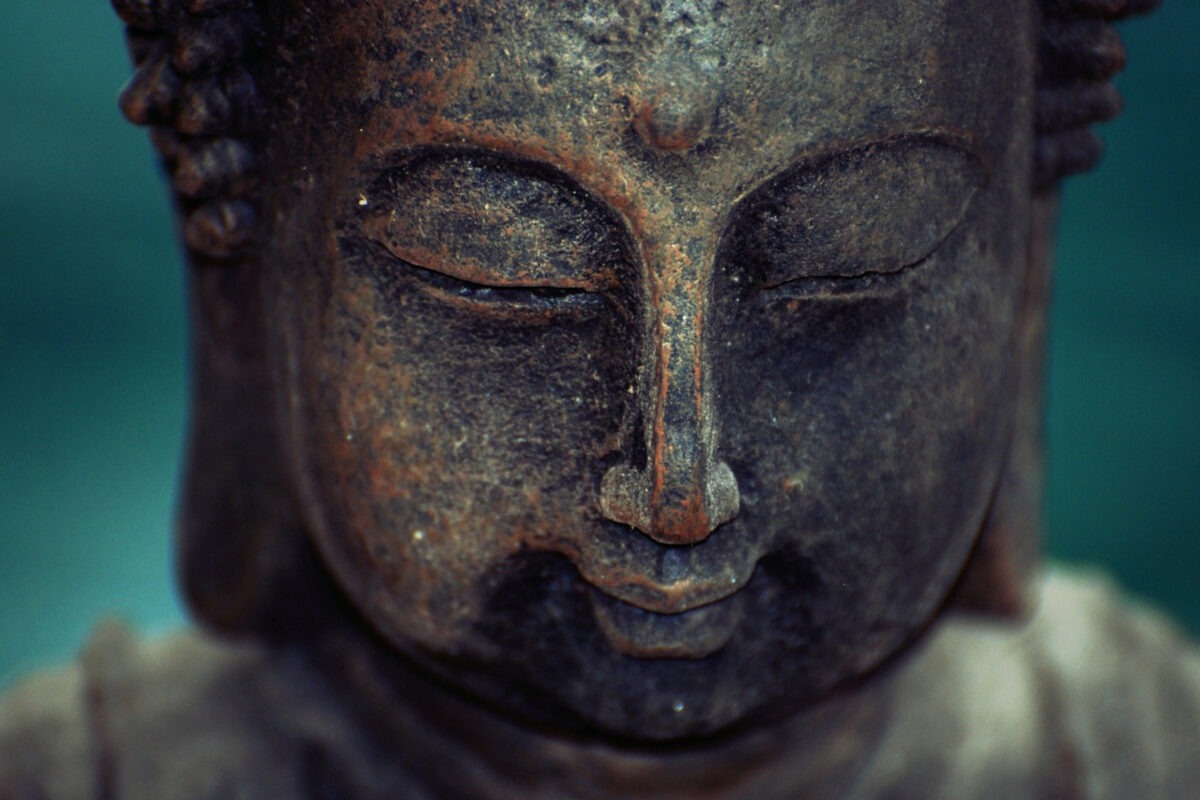
When the world spins fast and the mind along with it, it is easy to get caught in the stories it generates and disconnect from our source. A powerful traditional practice from the yogic tool box helps us to meet uncertainty, hopelessness, and fear many people are experiencing due to the corona virus: Yoga Nidra, the conscious yogic sleep.
I had the pleasure to speak with senior Hatha Yoga teacher Sadhana Pezet, founder of Shantarasa Yoga, a Yoga Nidra Expert and dedicated instructor of traditional yoga since 40 years. She specialises in the foundations knowledge and practices of the yoga tradition, explains the difference between general relaxation techniques and traditional forms of Yoga Nidra, and encourages a subtler understanding of the nature of the body to be able to meet what arises in any given moment with skill and courage.
Sadhana, we are experiencing unique and quite challenging times. How can Yoga Nidra help us address uncertainty, anxiety, and stress?

Sadhana Pezet
I could not think of a practice that is more beneficial today than Yoga Nidra. We can witness a tremendous increase in mental disturbance, anxiety, fear and hopelessness as well as difficulty identifying the real from the unreal. People have a lot of concerns, not just about the pandemic, but about climate change and the style of governance in the world – everything seems to be heightening a sense of insecurity. Yogic practices such as Yoga Nidra, Meditation, and Pranayama assist people in letting go of the tendency to constantly be fearful of the future, apprehensive in the present, or remorseful of the past. Such practices enable people to feel more empowered, focused, clear minded and peaceful no matter what is going on. Yoga Nidra supports us to be centred and therefore more creative and able to meet the moment with what is required. There is so much benefit that could be brought forward to this moment if we were empowered people.
How does Yoga Nidra support that?
Think of a garden: there are certain plants called weeds that set really deep roots. Or plants that leave hundreds of these little nodules in the ground that resprout themselves every season so you can never actually get them out. Our mind is a lot like that. It has deep seeds and roots that connect with deeply engrained tendencies, called Samskaras (impressions) and Vasanas (samskarasa strengthened through habit). The only way to get to the place where they can be released or diminished in their force is through practices that take us to the root of impressions themselves and past the mind. Our tendency is to reinforce and strengthen the embedded material and forces within our psyche. Yoga Nidra guides us to the subtle layer where these powerful subliminal forces have their seed within us.
What is the basic structure of the practice?
There are many scripts and ways of bringing a person into the state of Yoga Nidra which can be utilized to suite the individual. The most useful methods give very succinct guidance. The cues are very intentional and minimal and guide people beyond the mind-body to the causal layer of being accompanied by the sleep state. The seat of this layer of being is within the heart centre. Here they immerse into the causal body and dreamless sleep state and are trained to remain conscious while the body and mind are in a state of complete rest.
General relaxation is a preparatory stage that is useful in that it generates a reduction in stress and tension, calms the mind and facilitates necessary healing. With more traditional forms of Yoga Nidra people will first go through general relaxation phases where their psyche will start to spill out material, but eventually they will arrive at Yoga Nidra, which is a state where the mind, the ego, and the body are not active. A refined state of awareness is awake as witness to the depth. It is a state of interesting freedom.
If the guidance is full of imagery and suggestions the mind just stays present and active. There are many practices today that take people on journeys of imagination and visualizations which unfortunately keep the mind too present. The practices that work best place the awareness of a person at points within the subtle body – Marma Points or Chakras – so that also the Nadis become clear and pacified.
What are the three main aspects to keep in mind?
To me, number one is preparation, the ability to remain still, and treating it like a practice. Some people get very restless lying in the relaxation position, which is evidence of the mind being active. There is training to learn how to become still in Shavasana. Number two is good guidance. From my perspective that means a traditional approach which is minimalist in its cues and refined in its intention. Number three is dedication, a willingness to practice consistently for a period of time with enthusiasm, and to be willing to take guidance from a skilful teacher to meet whatever arises intelligently and usefully.
When a practice has traditional roots and intention it has far more power than anything that is reinvented. Yoga Nidra has been tried and tested through the human consciousness for thousands of years and has earned its right to be instructed as intended and with respect. Sometimes the extras we add diminish the power of it. It is such a worthy and powerful practice for people to meet the disturbance they are experiencing today. It has powerful use in our time; people need the insight and rest it gives to the body, mind, and senses
Even more useful than meditation?
For many people meditation is challenging because the mind is untrained. If the mind is anxious, disturbed or dull it is hard to reach meditation. Yoga Nidra is a perfect training for meditation. It teaches the person not to get caught in the mind while at the same time cleansing the mind. It trains watching and going past the movements and habits of the mind.
We are not looking to increase the vrittis (whirlings of the mind) such as imagination, fantasy or memory which is what some practices do today. We want to be well-grounded in the physical nature so that there is an anchor point for our consciousness to fulfill the purpose of our existence. We want to have skill in the subtle body and want to weed out the roots of the powerful motivational forces behind all our behaviours, reactions, aversions and attractions.
What is the relationship between Asana and Yoga Nidra?
Having a little bit of Asana practice before Yoga Nirda is beneficial. The conscious movement and action of asana helps to free a lot of what is caught within the body. Our cells, tissues, and muscles carry the memory of our experience. Asana begins to release that surface layer and to refine the flow of energy. If energy is flowing more easily and potently, then Yoga Nidra becomes deeper. Equally practices like Pranayama are beneficial. They work more on the energetic and mental level and release congestion in the mental body. Effective Yoga Nidra bypasses the obstacles and distractions of the physical and mental bodies while guiding the practitioner skilfully to the more refined state of the causal layer. Here we may access the deep transcendental state and abide within our essential nature.
Traditionally, Yoga Nidra was always practiced after asana. The formula says that for every five minutes of asana there should be one minute for Yoga Nidra. You have awakened the Shakti in the body and the mind, now you want to bring all the benefit even deeper so that transformation occurs. If you just do asana and walk off into life without the stillness and silence of deep Yoga Nidra seating the benefits of your practice through the koshas (layers of being) they may be missed. It is like ordering a really potent power juice and then not drinking it.
What is the difference between normal sleep and Yoga Nidra?
Normal sleep is unconscious. You go into a kind of dull state where the mind is focused on non-being. Yet the importance of normal sleep is that the brain does a whole lot of flushing. There are many proteins that gather in the brain through the activity of the senses and all the functioning of the brain and mind during the day. If a person does not arrive in the deep sleep state, the brain does not clear itself of this accumulation – which is call Ama in Yoga and Ayurveda. That is why people become so unwell when they can’t sleep well.
Yoga Nidra – conscious deep sleep – is more beneficial. There are ways to prepare yourself before you go to sleep, to set the tone so when you wake up you feel like you have been very deep, refreshed, cleansed, and altered. It is not just physiological cleansing. The release on the level of the mind is profound. Deep seated traumas, memories, and impressions carried through all of this life and obviously from the yogic perspective from lifetimes can release. In the state of Prajna, the dreamless sleep state, the human being has a lot of power to awaken, because the veil between the individual consciousness and Turiya, the expanded consciousness of the essential being, can be lifted. That is the call of the practice.
People share that they are drawn closer and closer to what is divine, supreme, and beautiful within them. Then a lot of the heaviness just begins to dissolve, which is very healing. Initially, the whole practice of Yoga Nidra is about healing at every level. This is so much needed today. If you have awareness in Nidra it is a potent Shakti. It can unravel all the seeds of concern and even begin to release the karmas. In this state of freedom, the only desire is for that which uplifts. You just feel love towards each and everything. And even crazy moments like we are experiencing right now – you can sense the power of change and good within it instead of fear. You can feel that there is such tremendous possibility in this exact time and be an active contributor to peaceful and fruitful outcomes.
Thank you Sadhana for this conversation!
*
 Yoga Nidra Online Training
Yoga Nidra Online Training
Do you want to dive deeper into the practice of Yoga Nidra? Sadhana offers Online Yoga Nidra Trainings with Shantarasa Yoga. Visit www.shantarasa.com to get all the details.
Sie sehen gerade einen Platzhalterinhalt von Facebook. Um auf den eigentlichen Inhalt zuzugreifen, klicken Sie auf die Schaltfläche unten. Bitte beachten Sie, dass dabei Daten an Drittanbieter weitergegeben werden.
Mehr InformationenSie sehen gerade einen Platzhalterinhalt von Instagram. Um auf den eigentlichen Inhalt zuzugreifen, klicken Sie auf die Schaltfläche unten. Bitte beachten Sie, dass dabei Daten an Drittanbieter weitergegeben werden.
Mehr Informationen